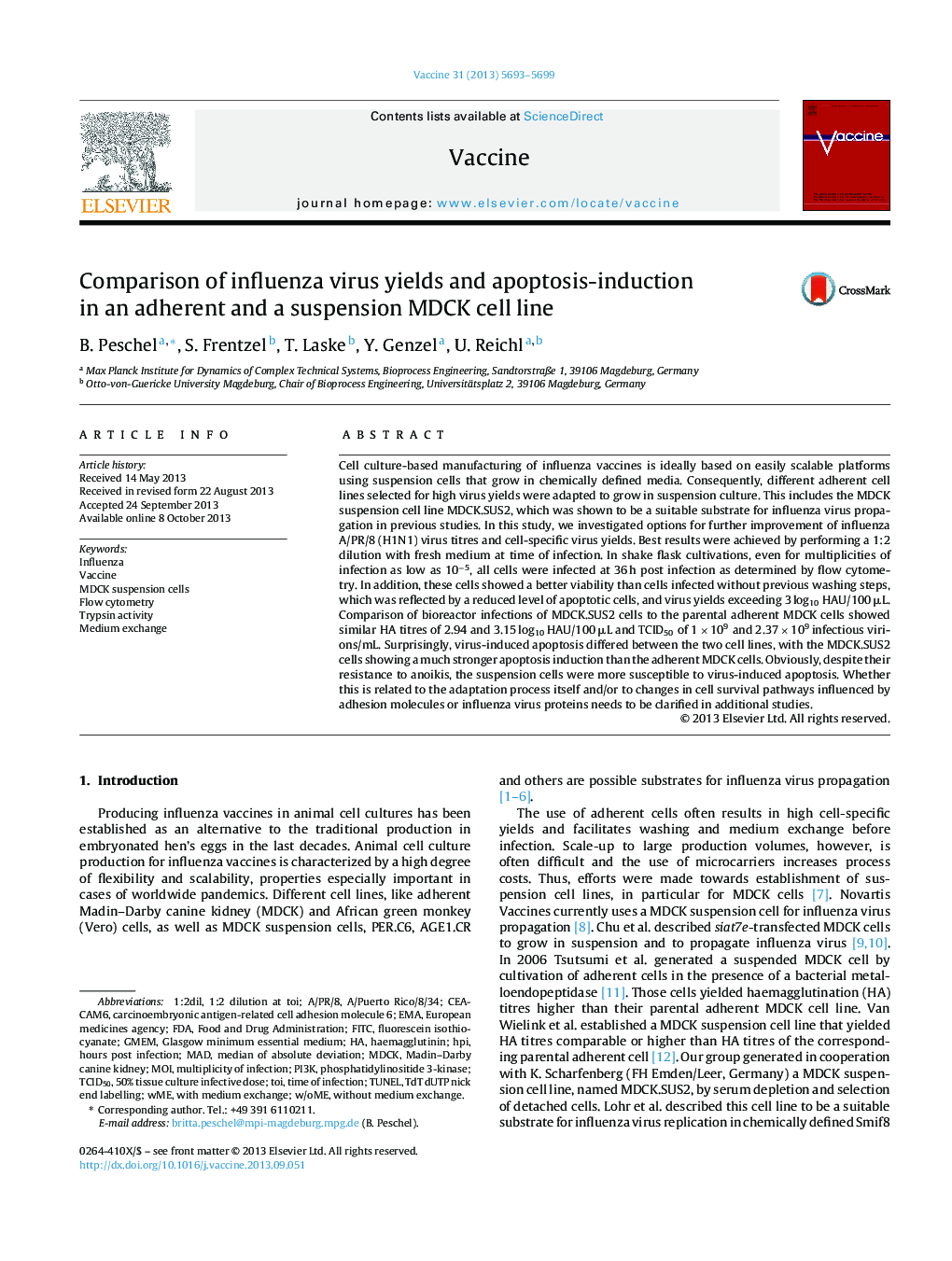| Article ID | Journal | Published Year | Pages | File Type |
|---|---|---|---|---|
| 10965877 | Vaccine | 2013 | 7 Pages |
Abstract
Cell culture-based manufacturing of influenza vaccines is ideally based on easily scalable platforms using suspension cells that grow in chemically defined media. Consequently, different adherent cell lines selected for high virus yields were adapted to grow in suspension culture. This includes the MDCK suspension cell line MDCK.SUS2, which was shown to be a suitable substrate for influenza virus propagation in previous studies. In this study, we investigated options for further improvement of influenza A/PR/8 (H1N1) virus titres and cell-specific virus yields. Best results were achieved by performing a 1:2 dilution with fresh medium at time of infection. In shake flask cultivations, even for multiplicities of infection as low as 10â5, all cells were infected at 36 h post infection as determined by flow cytometry. In addition, these cells showed a better viability than cells infected without previous washing steps, which was reflected by a reduced level of apoptotic cells, and virus yields exceeding 3 log10 HAU/100 μL. Comparison of bioreactor infections of MDCK.SUS2 cells to the parental adherent MDCK cells showed similar HA titres of 2.94 and 3.15 log10 HAU/100 μL and TCID50 of 1 Ã 109 and 2.37 Ã 109 infectious virions/mL. Surprisingly, virus-induced apoptosis differed between the two cell lines, with the MDCK.SUS2 cells showing a much stronger apoptosis induction than the adherent MDCK cells. Obviously, despite their resistance to anoikis, the suspension cells were more susceptible to virus-induced apoptosis. Whether this is related to the adaptation process itself and/or to changes in cell survival pathways influenced by adhesion molecules or influenza virus proteins needs to be clarified in additional studies.
Keywords
TOIGMEMA/Puerto Rico/8/34FDATCID50WmEMDCKMADCEACAM6PI3KFITCEMAhpi50% tissue culture infective dosehaemagglutininMOIInfluenzaEuropean Medicines agencyTUNELTime of infectionFood and Drug Administrationhours post infectionphosphatidylinositide 3-kinaseTrypsin activityfluorescein isothiocyanateFlow cytometryMedium exchangeVaccinemultiplicity of infectionMadin–Darby Canine Kidney
Related Topics
Life Sciences
Immunology and Microbiology
Immunology
Authors
B. Peschel, S. Frentzel, T. Laske, Y. Genzel, U. Reichl,
